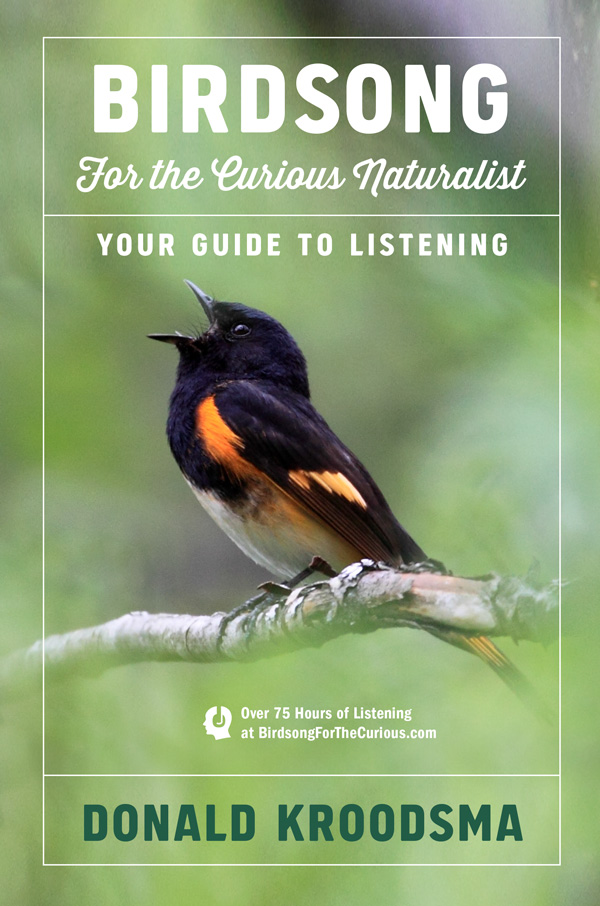Yellow-breasted chat
Chapter 6: Song Learning Often Creates Complex Songs and Large Repertoires
Subchapter: How a repertoire is delivered
From page 100 in the book.

Photo by Robert Royse
♫433. Listen for the BOB and WHITE notes, almost certainly mimicked from the northern bobwhite, and mentally mark every time you hear those two notes. At some point, you no longer hear those notes because the chat has moved on to a new "package" of song phrases. Give yourself a few minutes to listen—you are on "chat time"! If you're impatient, listen to the last minute and confirm that the BOB and WHITE notes are not there, and then go back and search for the transition between song packages. June 3, 2010. Shawnee National Forest, Illinois. (10:28)
♫434. A night singer, on an otherwise silent stage. Hear any other birds singing? Maybe another chat in the distance. Maybe a tree swallow in song flight, anticipating the dawn? Pick a unique song and try to chart this male's use of it during these 11 minutes. The first four songs seem not to occur again, suggesting that at 0:18 he is switching to a new package of songs. The series of three (sometimes four) buzzy notes at 0:36 no longer occurs after 2:50; the series of rising whistles, first heard at 1:04, also ends about there, at 2:44, signaling the end of one package and the beginning of the next. Listen for the "policeman's whistle" (not an actual imitation, though, I'm sure) at 9:18. 4:00 to 4:11 a.m. Sunrise at 5:08 a.m. May 27, 2009. Oxbow, Hells Canyon, Oregon. (10:59)
